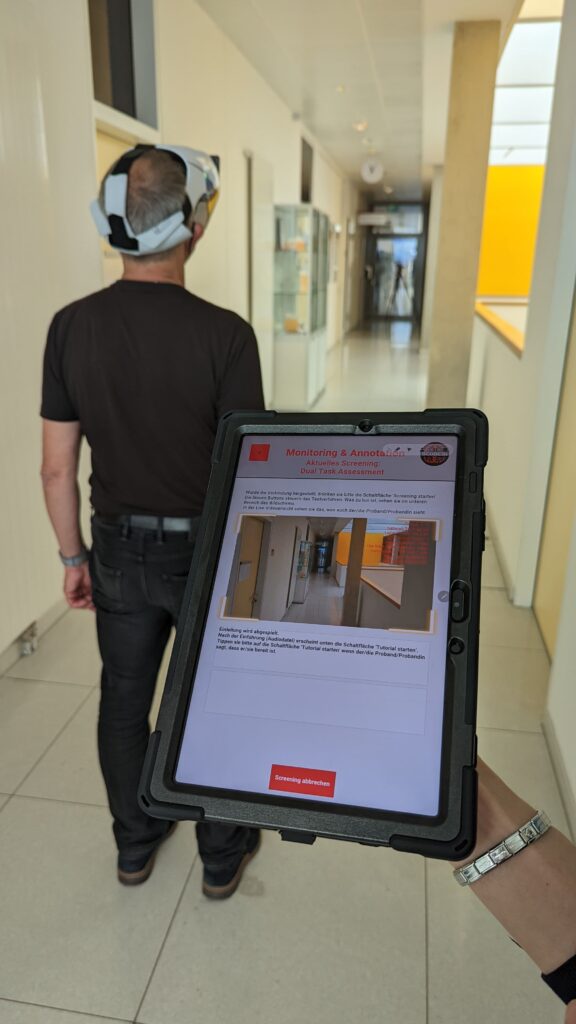Conventional test procedure
Dual-task describes the ability to perform two tasks simultaneously. This ability usually declines with age. An above-average loss of this ability can indicate cognitive changes such as dementia.
The dual-task assessment carried out in the SCOBES-AR project measures the influence of a cognitive task on the gait pattern, whereby the cognitive task consists of counting backwards in three steps. The gait analysis is carried out once without and once with the cognitive task in order to be able to recognise differences. The data collected includes walking speed, stride length and the duration of the gait phases. Impaired people show a greater change in gait parameters if calculations are performed at the same time as walking.
The results are measured with the naked eye and a stopwatch as well as with sensors that are attached to the back of the foot using a strap.
Adapted test procedure
The digitalised version of the Dual Task Assessment takes place on the same walking route as the conventional procedure. For the adapted version of this test procedure, a smartphone with the specially developed app is mounted in a head mount. Augmented reality (AR) technologies are used to automatically measure the walking distance and provide localised instructions. The test supervisor can start and monitor the test procedure via a tablet. Documentation is also possible via the tablet. The test subject performs the test procedure with the head support and all parameters are automatically recorded via the smartphone.
